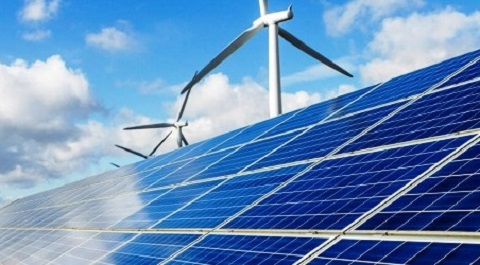The Armenian Weekly. Let’s start the year off with some good news in an all-important aspect of daily life, energy. But you’ll have to read through the important buildup to appreciate the importance of the actual news.
Recently, a few items have appeared in the news that suggest the Republic of Armenia is on the right track in the field of energy, that is going with renewables (solar, wind, and hydro-electric). Keep in mind that this realm is fraught with hazards, starting with what threatens the entire balance of life on our planet, climate change.
In the RoA’s case, it is even more complicated because there are no “traditional,” that is hydrocarbon, sources of energy for the country to exploit within its borders, and two of its neighbors have imposed a three-decade-long illegal blockade. One of those, Azerbaijan, is a significant producer of oil and natural gas while the other, Turkey, is doing all it can to become a major transit route for these fuels while also seeking to exploit undersea reserves in the eastern Mediterranean.
The good news is that Iran, RoA’s southern neighbor is one of the global leaders in hydrocarbon production and has been supplying fuel along with Russia. The latter’s fuels must cross Georgia which has occasionally been a problem. Plus, fuel extracted in Azerbaijan crosses Georgia, which also uses some of it, rendering it susceptible to Baku’s blackmail. But the world is racing to get off the hydrocarbon fuel addiction.
Read also
Fortunately, the RoA is endowed with fairly abundant sources of solar, wind and hydro-electric energy. So it becomes a matter of building the infrastructure to utilize these clean sources of energy, which is in line with what is necessary from a global, human perspective, too.
No discussion of energy in Armenia is complete without mention of the Medzamor (Metsamor) nuclear power plant. This facility, originally placed into service in 1976, has had its life extended through upgrades, but will soon have to be shut down. Recall that it is of the same design as the one which experienced a meltdown in Chernobyl, Ukraine. There is chatter about one more extension. What’s even worse is the discussion of building a new nuclear power plant. The extreme amount of damage that nuclear power plant accidents (as low probability as those may be) can cause renders them an unacceptable option, even more so for a country as small as the RoA. Add to that the problem of disposing the radioactive waste produced that is hazardous for tens of millions of years! So this source of power must also be replaced with renewables.
Given the unfortunate war-footing the RoA must maintain, liquid fuels for the military will be a necessity for the foreseeable future. This means petroleum-based sources for gasoline, diesel and aviation fuel (though even on this front, research is ongoing to develop plant-based, therefore renewable sources of fuel). However, everything else can, should and must be converted to electricity, even in the small villages that are off the country’s electric grid so that the extent of tree harvesting for heating and cooking can be reduced to a negligible amount. This raises the problem of storage, which is something confronted by everyone worldwide. The technology needed to build huge batteries to store electricity is advancing rapidly, so this shouldn’t be an obstacle for much longer. Thus, the proper policy now is to build electricity generating infrastructure, which is where the good news mentioned above finally comes into view.
One more precaution must be noted before jumping into the good news. Hydroelectric power is clean, i.e. it doesn’t generate climate destabilizing gases. But, it can have other effects, mostly biological, on the aquatic life of the streams and rivers that must be dammed to generate electricity. Therefore it must be used cautiously and judiciously. In the RoA’s case, hydropower has two other downsides: 1. the biggest water source used to generate it comes from Lake Sevan, and pulling too much water out of it can severely harm all sorts of other benefits the lake provides; 2. micro-hydro, as it’s called, produces small amounts of electricity from smaller streams for (mostly) local use, but these streams are also needed for irrigation and their overuse for power harms local agricultural production.
November seemed to be a particularly good news month. One item reported that two new wind farms, one in the north and one in the south, are to be built. Another noted the largest solar power plant in the country coming online. Yet another was about the signing of an agreement with Masdar, a United Arab Emirates based company, for multiple solar power projects. Earlier in the year in March, a contract for solar power generation with a German-Italian consortium had been renegotiated to secure better terms for the RoA and had gotten funding from the World Bank.
But what good is electricity if you can’t move it around to use where and when it’s needed? Even on that front there’s good news. Construction of the third set of high-voltage power lines between Iran and RoA and the fourth such set between Georgia and RoA address this aspect of the energy supply issue. Natural gas is imported from Iran and used to generate electricity then sold back Iran, too. Developing this infrastructure helps secure RoA’s position as a transit avenue for electricity, regardless of how it is generated. Thus, with hydrocarbons declining as a fuel source, the importance of Baku’s oil and gas and Turkey’s pipelines will decrease while Armenia’s power lines will become relatively more important.
The only bit of somewhat bad news is that a new gas fired power plant is also being built in Yerevan. It is to be much more efficient than the current facilities. Yet building expensive infrastructure like this locks in use of natural gas/methane for decades to come. So the country will be saddled with a stranded asset (i.e. an expensive item that is no longer usable) or will continue to produce climate damaging carbon dioxide for an extended period of time. But, perhaps given the animosity of the neighbors, this diversity in energy generation is an unfortunate necessary.
All of this is progress towards RoA’s stated goal of generating 30 percent of its electricity from renewables (solar and wind) by 2025. Perhaps it’s time to set a new target, 50 percent or 60 percent from renewables by 2030 with an eye not to build a new nuclear power plant. This is very doable if the process of improving the insulation in residential structures that began several years ago continues on a comprehensive scale (at the very least in the large cities).
If you’ve got contacts in Yerevan who can influence these decisions, use them to nudge energy policy ever more towards renewables. Also, if opportunities come up to aggregate small investments into large sums to build renewables-based power plants, participate and make a little money off it, too. There is at least one such arrangement, based in Cyprus, that has been investing in Artsakh’s agricultural field. It is unfortunately not open to participation from the U.S. because of some legal technicalities. But, there’s hope!






















































